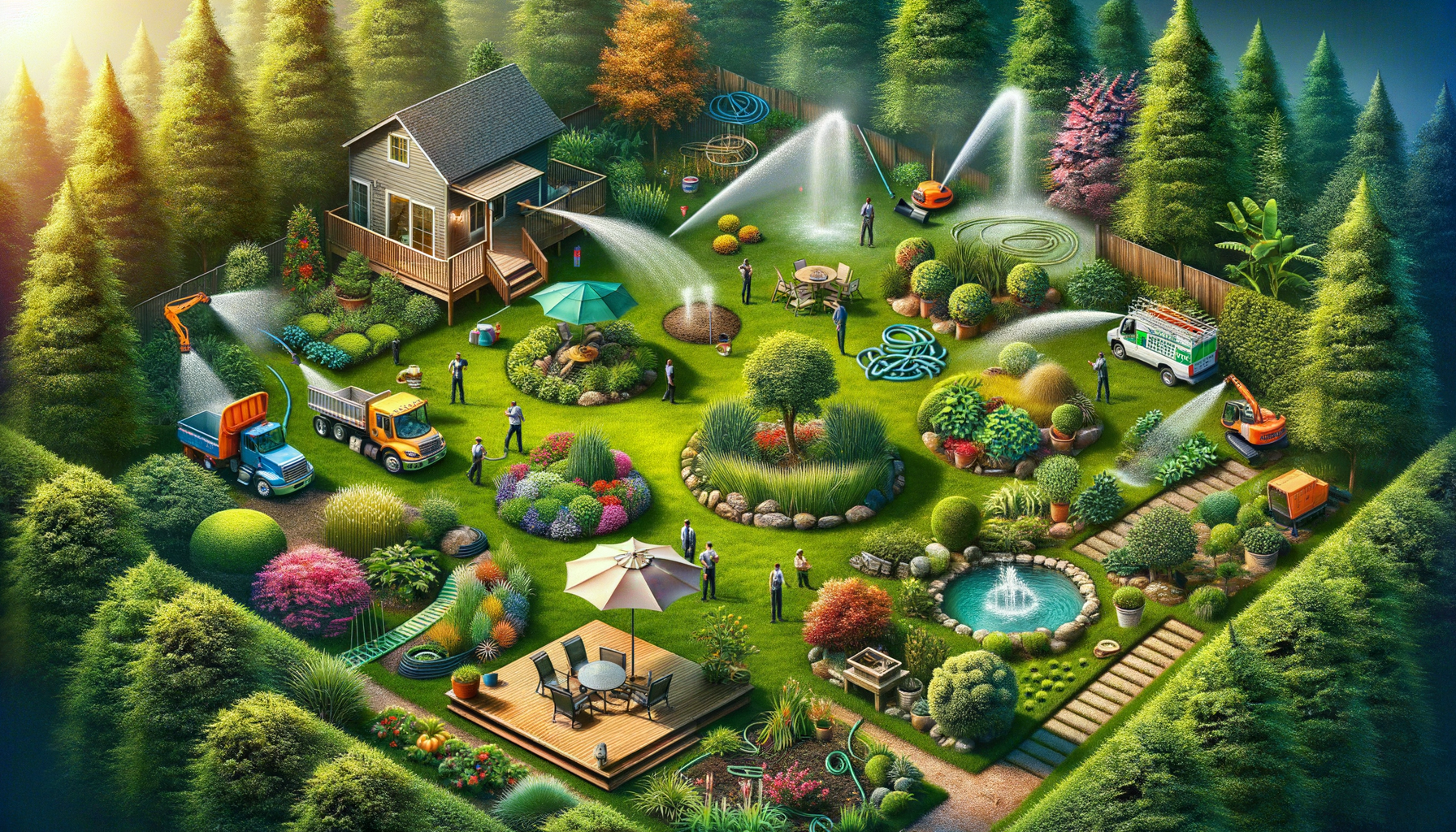7 Landscaping Mistakes That Will Cost You Money—And How to Avoid Them
Introduction to Landscaping Pitfalls Landscaping can significantly enhance the aesthetic and functional value of a property. However, improper planning or execution can lead to costly mistakes. Whether you’re a homeowner looking to spruce up your yard or a professional landscaper aiming to deliver exceptional results, understanding these common pitfalls is crucial. In this article, we

Introduction to Landscaping Pitfalls
Landscaping can significantly enhance the aesthetic and functional value of a property. However, improper planning or execution can lead to costly mistakes. Whether you’re a homeowner looking to spruce up your yard or a professional landscaper aiming to deliver exceptional results, understanding these common pitfalls is crucial. In this article, we will explore seven landscaping mistakes that could cost you money and provide insights into how you can avoid them to ensure your outdoor spaces are both beautiful and sustainable.
Poor Planning and Design
One of the most critical steps in landscaping is the planning and design phase. Neglecting this step can lead to a host of problems down the line. A well-thought-out plan ensures that all elements of your landscape work harmoniously together. Consider the following aspects:
- Site Analysis: Understand the unique conditions of your site, such as soil type, climate, and existing vegetation.
- Functional Zones: Designate areas for different activities, like relaxation, play, or gardening.
- Future Growth: Consider how plants will grow over time and plan for mature sizes to avoid overcrowding.
Skipping these considerations can lead to a disjointed design that might require costly alterations in the future. Investing time in a comprehensive design plan can save money and enhance the longevity of your landscape.
Ignoring Soil Quality and Preparation
The foundation of any successful landscape is the soil. Ignoring soil quality can lead to poor plant health and increased maintenance costs. Soil testing is a crucial step that many overlook. It provides valuable information about nutrient levels and pH balance, guiding you in selecting the right plants and amendments.
To improve soil quality:
- Conduct Soil Tests: Test for pH, nutrient levels, and drainage capabilities.
- Add Organic Matter: Incorporate compost or well-rotted manure to enhance soil fertility.
- Ensure Proper Drainage: Poor drainage can lead to waterlogged roots and plant diseases.
By addressing soil issues early, you can prevent costly plant replacements and ensure a thriving landscape.
Overlooking Water Management
Water management is a critical aspect of landscaping that, if neglected, can lead to substantial water bills and plant health issues. Efficient irrigation systems and water-wise plant selection are key components of effective water management.
Consider the following strategies:
- Install Drip Irrigation: This system delivers water directly to the roots, reducing evaporation and water waste.
- Select Drought-Tolerant Plants: Choose plants suited to your climate to reduce water requirements.
- Mulching: Use mulch to retain soil moisture and suppress weeds.
By implementing these strategies, you can conserve water, reduce costs, and create a sustainable landscape that thrives even in dry conditions.
Choosing the Wrong Plants
Plant selection is a crucial factor in the success of any landscape. Choosing the wrong plants can lead to increased maintenance, higher costs, and poor aesthetic outcomes. Factors to consider when selecting plants include:
- Climate Compatibility: Ensure plants are suited to your local climate and hardiness zone.
- Maintenance Requirements: Consider the time and resources needed to maintain the plants.
- Invasive Species: Avoid plants that can become invasive and disrupt local ecosystems.
By carefully selecting plants that are compatible with your environment and design goals, you can avoid unnecessary expenses and create a harmonious landscape.
Neglecting Regular Maintenance
Even the most well-designed landscape requires regular maintenance to remain healthy and attractive. Neglecting maintenance can lead to overgrown plants, pest infestations, and other costly problems. Key maintenance tasks include:
- Pruning: Regularly trim plants to maintain shape and encourage healthy growth.
- Weeding: Keep weeds under control to prevent them from competing with your plants for nutrients.
- Pest Management: Monitor for pests and diseases and address issues promptly.
By staying on top of these tasks, you can prevent minor issues from becoming major problems, saving time and money in the long run.
Conclusion: Creating a Cost-Effective Landscape
Landscaping can be a rewarding endeavor that enhances the beauty and functionality of your outdoor spaces. By understanding and avoiding these common mistakes, you can create a landscape that is not only aesthetically pleasing but also cost-effective and sustainable. Whether you’re a DIY enthusiast or hiring a professional, careful planning, plant selection, and regular maintenance are key to achieving a successful landscape that stands the test of time.